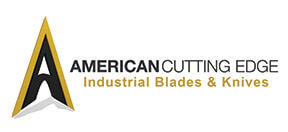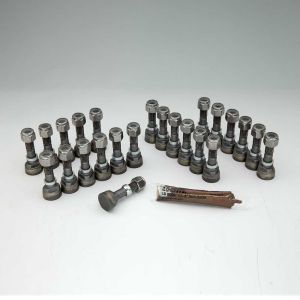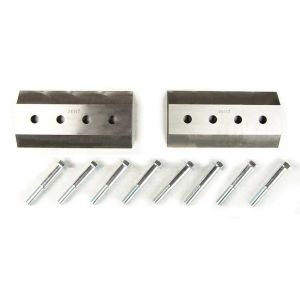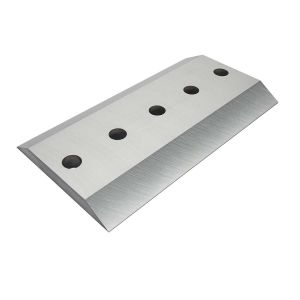Films, Vinyl, Fabrics, and Non-Wovens

Films, vinyl, fabrics, non-wovens, laminates, paper, and heavy film are often manufactured onto large, bulk material rolls. These rolls are too large to utilize in the end product, so the material is converted into smaller rolls for final production using a process called slitting.
During the slitting process, the material on a master or parent roll is unwound and cut into specific widths (slit widths) by traveling through a series of blades. Razor slitting, crush cut slitting, and shear slitting are the three most common types.
Razor Slitting
Razor slitting is easy and inexpensive to set up and is commonly used to convert films, plastics, tapes, ribbons, and vinyl. Using razor slitting, the material can be converted into very narrow slit widths and still produce very little dust, making it one of the cleanest methods of slitting.
The blades used for razor slitting are inexpensive and require more frequent changes than with other types of slitting. Also referred to as in-air slitting, razor slitting blades are mounted to a bar and remain stationary during the slitting process. The material is conveyed across 1 to 120 blades on a single bar, depending on the width of the material to be cut. During blade replacement, it is best if all blades on the bar are changed at the same time; however, it is not necessary on some set-ups.
The ideal blade material is dependent on the type of material being cut and the needs of the business. For short runs, lower grade blade materials, such as carbon steel and stainless steel, may be utilized. To decrease maintenance-induced downtime and best meet the needs of long-runs, use a high-grade blade material, like tungsten carbide.
Be precise. A lack of precision is dangerous when the margin of error is small. - Donald Rumsfeld
Crush Cut Slitting
Crush cut slitting or scoring is used to separate thick, tough, non-woven materials, fabrics, laminates, and paper. The ragged edge created by this slitting process results in rolls that are thicker on the inside and more narrow (where the cut material lays flat) on the outside of the roll.
While this type of slitting produces the poorest edge quality, it is easy to setup and requires relatively inexpensive parts. In a crush cut slitter, the knife is held in place by a pneumatic holder and activated by air pressure. During the scoring process, a knife presses into the material and runs against a hardened anvil to separate the web of the material. The cutting edge on the knife has a radius tip and is not sharp.
When selecting a blade material, it is important to consider the hardness of the anvil since the anvil is more expensive to replace than the blade and the blade presses against the anvil continuously during the slitting process. Common blade materials are 52-100 steel and M2 steel.
Pride, precision, and the perfect product. - Tom Buchanan




